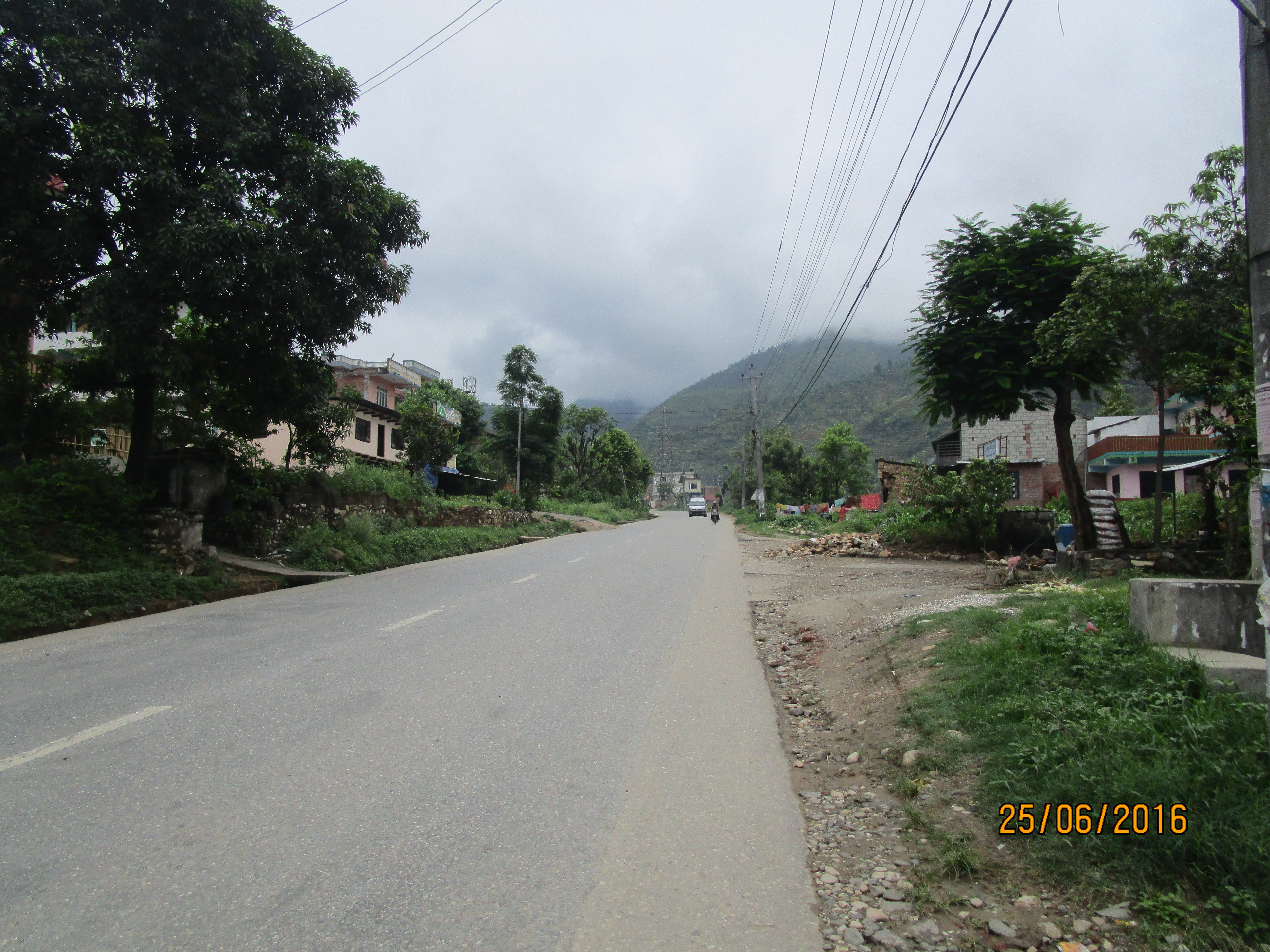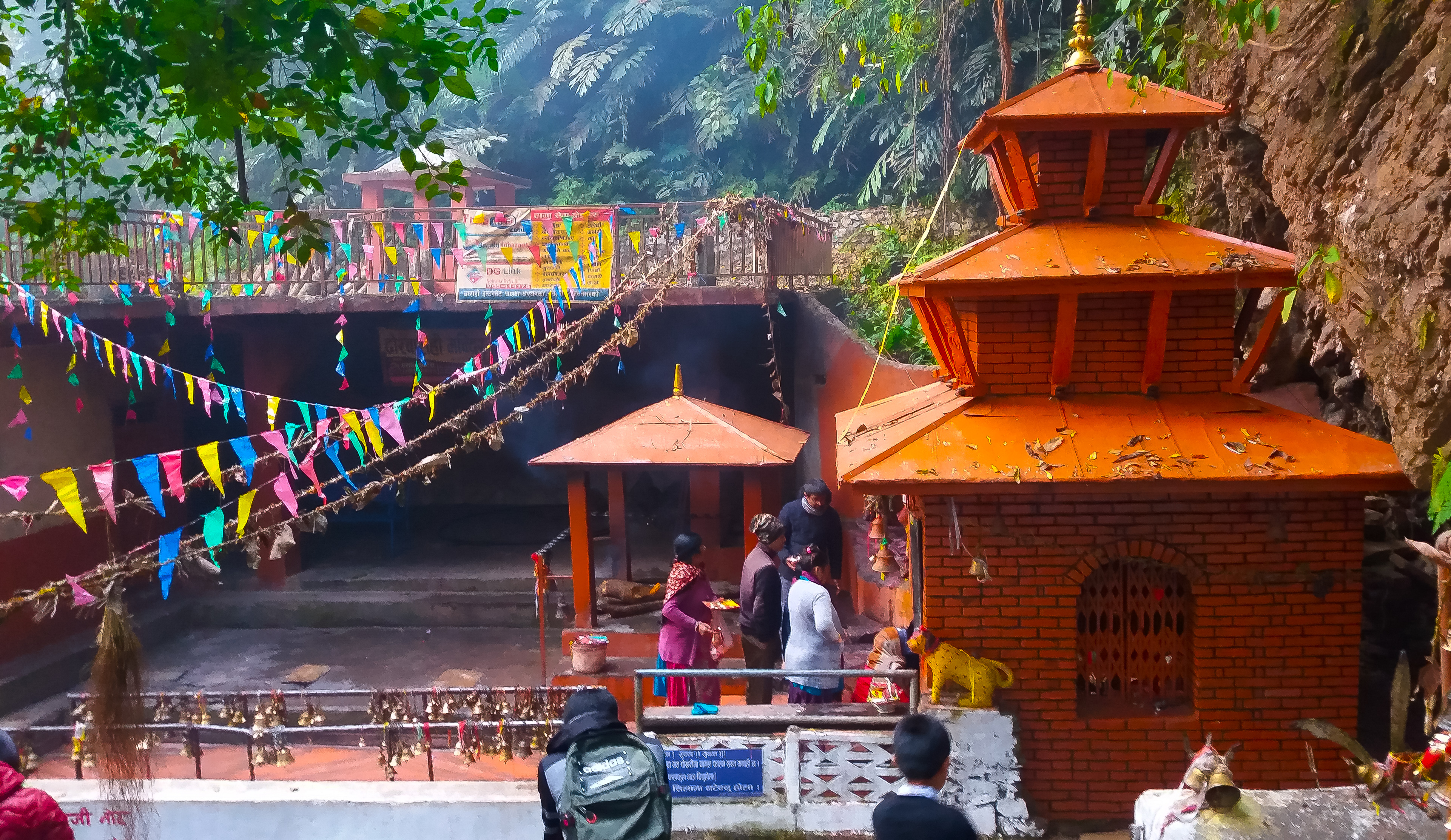|
Ghansi
Ghansi or Ghasi () was a Nepali grasscutter who is best remembered for inspiring Bhanubhakta Acharya to translate the Sanskrit epic Ramayana into the Nepali language. He made money by cutting grass and selling it. Ghansi built a well in order to be remembered after his death. Not much is known about him except that he belonged to the Pantha caste and lived near the well. He has been portrayed by multiple actors in film, and the tourist destination Ghansikuwa was named after him. Life One day, as Bhanubhakta Acharya sat on a stone slab in an unfrequented forest, he fell asleep while listening to birds chirping. When he awoke, he saw a person cutting grass. Acharya asked him about his whereabouts and Ghansi replied that he was a poor farmer who lived next to Acharya's village. He made money by cutting grass and selling it in the market. Ghansi told Acharya about his plan to build a well so that passers-by could be refreshed, and he could be remembered after his death. His words ... [...More Info...] [...Related Items...] OR: [Wikipedia] [Google] [Baidu] |
Bhanubhakta Acharya
Bhanubhakta Acharya () (1814—1868 CE) (1871—1925 BS) was a Nepali writer, poet, and translator. He is widely regarded as the first poet in the Nepali language, for which he was conferred with the title of "Aadikabi": literally, "the first poet". He is best known for translating the epic ''Ramayana'' from Sanskrit to Nepali for the first time. Initially, his translation of the Ramayana was popular in oral form. It was later compiled and published by Motirām Bhatta in the late 19th century as ''Bhanubhakta Ramayana''. Early life and education Bhanubhakta Acharya was born on 13 July 1814 (29 Ashadh 1871 BS) in the village of Chundi Ramgha, Tanahun District, Nepal to Dhananjaya Acharya, and Dharmawati Acharya. His father Dhananjaya Acharya was a government official and was the eldest of all brothers. Bhanubhakta received his primary education of Sanskrit at his home by his grandfather and later in Varanasi. Literary career South Asian languages including the Nepali lang ... [...More Info...] [...Related Items...] OR: [Wikipedia] [Google] [Baidu] |
Ghansikuwa
Ghansikuwa is a famous tourist destination in Tanahu District in the Gandaki Zone of Gandaki Province, Nepal Nepal (; ne, :ne:नेपाल, नेपाल ), formerly the Federal Democratic Republic of Nepal ( ne, सङ्घीय लोकतान्त्रिक गणतन्त्र नेपाल ), is a landlocked country in S .... It is famous for a pond constructed by Ghansi, a local who worked as grass cutter. Bhanubhakta was inspired by the activity of the Ghanshi, so he has noticeably mentioned him in his creations. Today, you can see the statues of Bhanubhakta and Ghanshi, inside the park premises and the well preserved pond, left to the park. The cool air flowing from the nearby Chisaudi Khola and easy access to the place, has made the place an attractive travel destination during weekends. Kamalbari: Just 2 Kilometers ride in the Prithivi Highway, east to the area lies Kamalbari, is another famous tourist destination in the district. Mt. Ma ... [...More Info...] [...Related Items...] OR: [Wikipedia] [Google] [Baidu] |
Prithvi Highway
The Prithvi Highway () is a highway connecting Naubise of Tribhuvan Highway, 26 km from Kathmandu, the capital of Nepal, and Prithivi Chowk, Pokhara, a tourist city in the western part of Nepal. History The construction of the highway started in 1967 with the help of the Chinese government. The construction was completed in 1974. The highway is named after King Prithvi Narayan Shah. Route This landslide-prone and heavily congested highway passes through five districts: Kathmandu, Dhading, Chitwan, Tanahu and Kaski. This highway has a junction with Tribhuvan Highway at Naubise. The Bharatpur-Mugling section connects this highway to Mahendra Highway, the longest highway in Nepal. The highway also connects Nuwakot District via a newly constructed road in Galchhi and connects to the district headquarter of Dhading District at Phurke Khola, Malekhu. Until 2011 opening of the B.P. Koirala Highway, this highway was the only improved land route from Kathmandu Valley to all ... [...More Info...] [...Related Items...] OR: [Wikipedia] [Google] [Baidu] |
Tanahun District
Tanahun District ( ne, तनहुँ जिल्ला , or ), a part of Gandaki Province, is one of the seventy-seven districts of Nepal. The district, with Damauli as its district headquarters, covers an area of and has a population (2011) of 323,288. Previously the town of Bandipur was its district headquarter. This district lies in the middlemost of country Nepal. The postal code of Tanahun is 33900. Bhanubhakta Acharya (Nepali: भानुभक्त आचार्य; 1814 – 1868) was a Nepalese poet and writer who translated the great epic Ramayana from Sanskrit to Khas language. His birthplace is Chundi Ramgha Tanahun Nepal. Bhanubhakta Acharya was born on 29 Ashar, 1871B.S. in Tanahun district of Nepal. Acharya was born to a Very Brahmin family and received education with a strong leaning towards religion from his grandfather at home. He is honored with the title Adikabi for the contributions he has made in the field of poetry and Khasi literature and every ye ... [...More Info...] [...Related Items...] OR: [Wikipedia] [Google] [Baidu] |
Tanahu District
Tanahun District ( ne, तनहुँ जिल्ला , or ), a part of Gandaki Province, is one of the seventy-seven districts of Nepal. The district, with Damauli as its district headquarters, covers an area of and has a population (2011) of 323,288. Previously the town of Bandipur was its district headquarter. This district lies in the middlemost of country Nepal. The postal code of Tanahun is 33900. Bhanubhakta Acharya (Nepali: भानुभक्त आचार्य; 1814 – 1868) was a Nepalese poet and writer who translated the great epic Ramayana from Sanskrit to Khas language. His birthplace is Chundi Ramgha Tanahun Nepal. Bhanubhakta Acharya was born on 29 Ashar, 1871B.S. in Tanahun district of Nepal. Acharya was born to a Very Brahmin family and received education with a strong leaning towards religion from his grandfather at home. He is honored with the title Adikabi for the contributions he has made in the field of poetry and Khasi literature and every yea ... [...More Info...] [...Related Items...] OR: [Wikipedia] [Google] [Baidu] |
Vyas Municipality
Vyas (Byas), is a municipality of Tanahun District located in Gandaki Province in Nepal and incorporates the village ''Damauli'', the district headquarters, for which the municipality is also often referred to as Damauli. The municipality was established by merging the former Village development committee Damauli with several of its neighbors, the most recent merger being the one with Pokhari Bhanjyang in 2014. It lies on the bank of Madi Khola. It is one of the municipalities, which could be formed after the re-establishment of multiparty democracy in 1991 A.D. At the time of the 2011 Nepal census, it had a population of 70,335 people living in 18,339 individual households. It is believed that Sage Vyasadeva (different from the current Vyasa known as Krishna Dwaipayana Vyasa) was born in the vicinity of Vyas, for which the municipality was named after him. Ward Profile There are 14 wards in Vyas Municipality: Media To promote local culture Vyas has four FM radio stati ... [...More Info...] [...Related Items...] OR: [Wikipedia] [Google] [Baidu] |
People From Tanahun District
A person ( : people) is a being that has certain capacities or attributes such as reason, morality, consciousness or self-consciousness, and being a part of a culturally established form of social relations such as kinship, ownership of property, or legal responsibility. The defining features of personhood and, consequently, what makes a person count as a person, differ widely among cultures and contexts. In addition to the question of personhood, of what makes a being count as a person to begin with, there are further questions about personal identity and self: both about what makes any particular person that particular person instead of another, and about what makes a person at one time the same person as they were or will be at another time despite any intervening changes. The plural form "people" is often used to refer to an entire nation or ethnic group (as in "a people"), and this was the original meaning of the word; it subsequently acquired its use as a plural form of per ... [...More Info...] [...Related Items...] OR: [Wikipedia] [Google] [Baidu] |
Nepalese People
Nepalis (English: Nepalese ; ne, नेपाली) are the citizens of Nepal under the provisions of Nepali nationality law. The country is home to people of many different national origins who are the descendants of immigrants from India, Kashmir, Central Asia, and Tibet. The term Nepalis (Nepalese) usually refers to the ''nationality'', that is, to people with citizenship of Nepal, while the people without Nepalese citizenship but with roots in Nepal such as Nepalese Americans are strictly referred to as ''Nepali Speaking Foreigners'' ( ne, नेपाली भाषी विदेशी) who are speakers of Bhojpuri, Maithili, Nepali or any of the other 128 Nepalese languages but are now foreign citizens or of foreign nationality bearing passports and citizenship of the foreign nation. It is also not generally used to refer to non-citizen residents, dual citizens, and expatriates. Nepal is a multicultural and multi-ethnic country with a majority of Hindus (includin ... [...More Info...] [...Related Items...] OR: [Wikipedia] [Google] [Baidu] |
Bhanubhakta Ramayana
''Bhanubhakta Ramayana'' (), commonly known as ''Ramayan'', is the Nepali translation of Valmiki Ramayana by ''Adikavi'' Bhanubhakta Acharya. It was posthumously published in its complete form in 1887. It is widely considered to be the first Nepali epic. The prose style of the epic has been termed ''Bhanubhaktiya Laya'' since it was completely original in Nepali literature, being the first work. Due to this distinction, the author, poet Bhanubhakta Acharya is known as ''Adikavi'' (first poet) in Nepal. Background The epic is considered to have been a major first step to "democratising" Hinduism in Nepal as it allowed the general public access to one of the two pillars of Hindu Itihasa in their native language, diminishi ...[...More Info...] [...Related Items...] OR: [Wikipedia] [Google] [Baidu] |
Bhanu Ghansi Memorial ParkTanahu Ward No
*
{{Disambiguation ...
Bhanu may be: * an epithet of the deity Surya *Eldest son of the Hindu deities-Shri Krishna and Devi Satyabhama * the name of a place in Nepal: **Bhanu Municipality, the current municipality **Bhanu, Nepal, the former VDC ** * a given name; notable people with the name include: ** Muktha (actress), stage name Bhanu ** Bhanu (Tamil militant) ** Bhanu Bandopadhyay, Indian actor ** Bhanubhakta Acharya, Nepali writer See also * Banu (other) Banu or BANU may refer to: * Banu (name) * Banu (Arabic), Arabic word for "the sons of" or "children of" * Banu (makeup artist), an Indian makeup artist * Banu Chichek, a character in the ''Book of Dede Korkut'' * Bulgarian Agrarian National Union ... [...More Info...] [...Related Items...] OR: [Wikipedia] [Google] [Baidu] |
Bhanu Ghansi Memorial Park
*
{{Disambiguation ...
Bhanu may be: * an epithet of the deity Surya *Eldest son of the Hindu deities-Shri Krishna and Devi Satyabhama * the name of a place in Nepal: **Bhanu Municipality, the current municipality **Bhanu, Nepal, the former VDC ** * a given name; notable people with the name include: ** Muktha (actress), stage name Bhanu ** Bhanu (Tamil militant) ** Bhanu Bandopadhyay, Indian actor ** Bhanubhakta Acharya, Nepali writer See also * Banu (other) Banu or BANU may refer to: * Banu (name) * Banu (Arabic), Arabic word for "the sons of" or "children of" * Banu (makeup artist), an Indian makeup artist * Banu Chichek, a character in the ''Book of Dede Korkut'' * Bulgarian Agrarian National Union ... [...More Info...] [...Related Items...] OR: [Wikipedia] [Google] [Baidu] |
_author.jpg)



_1938.jpg)